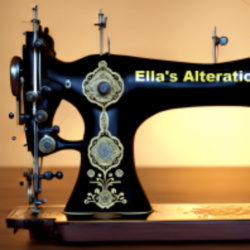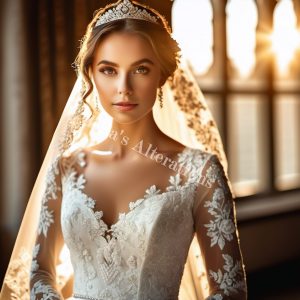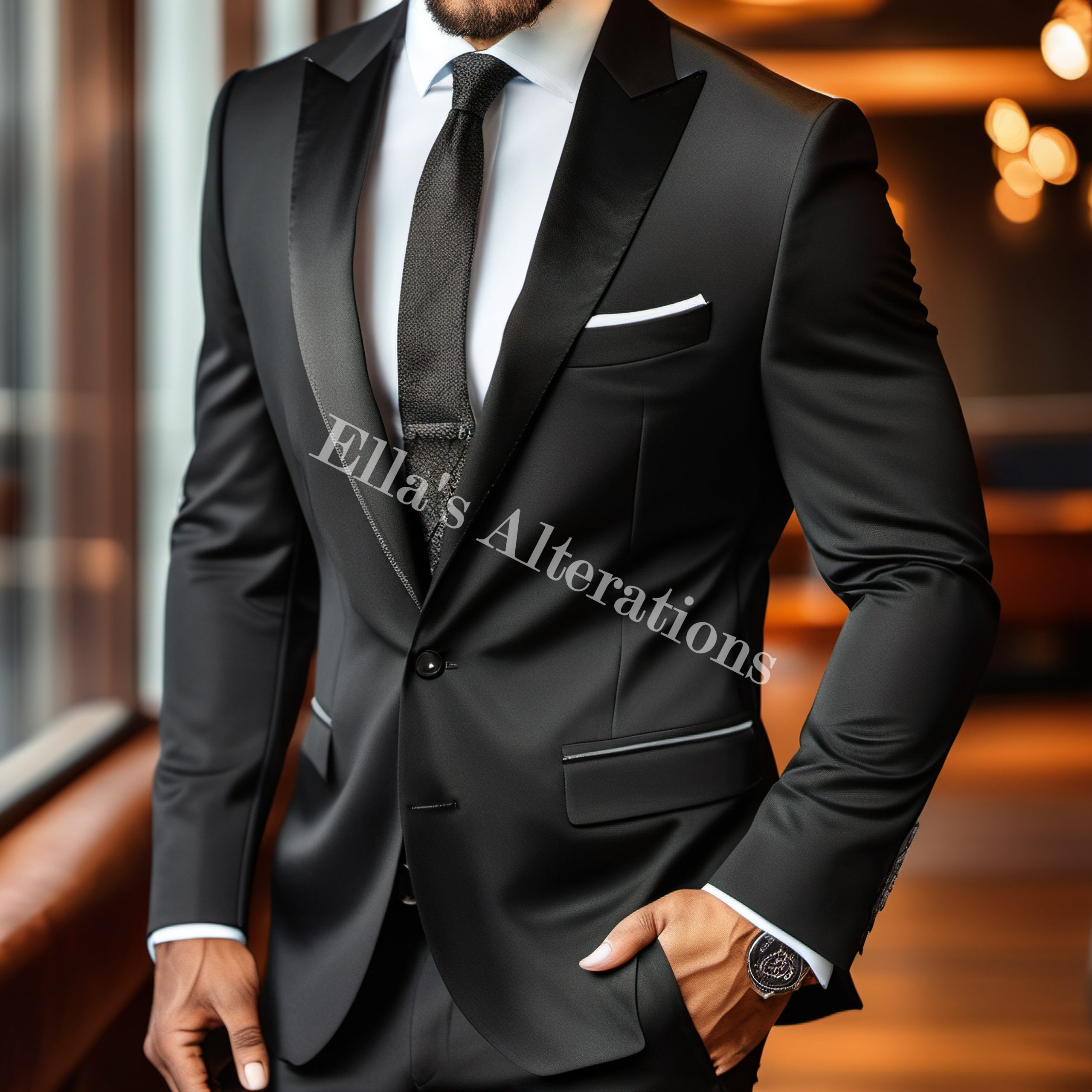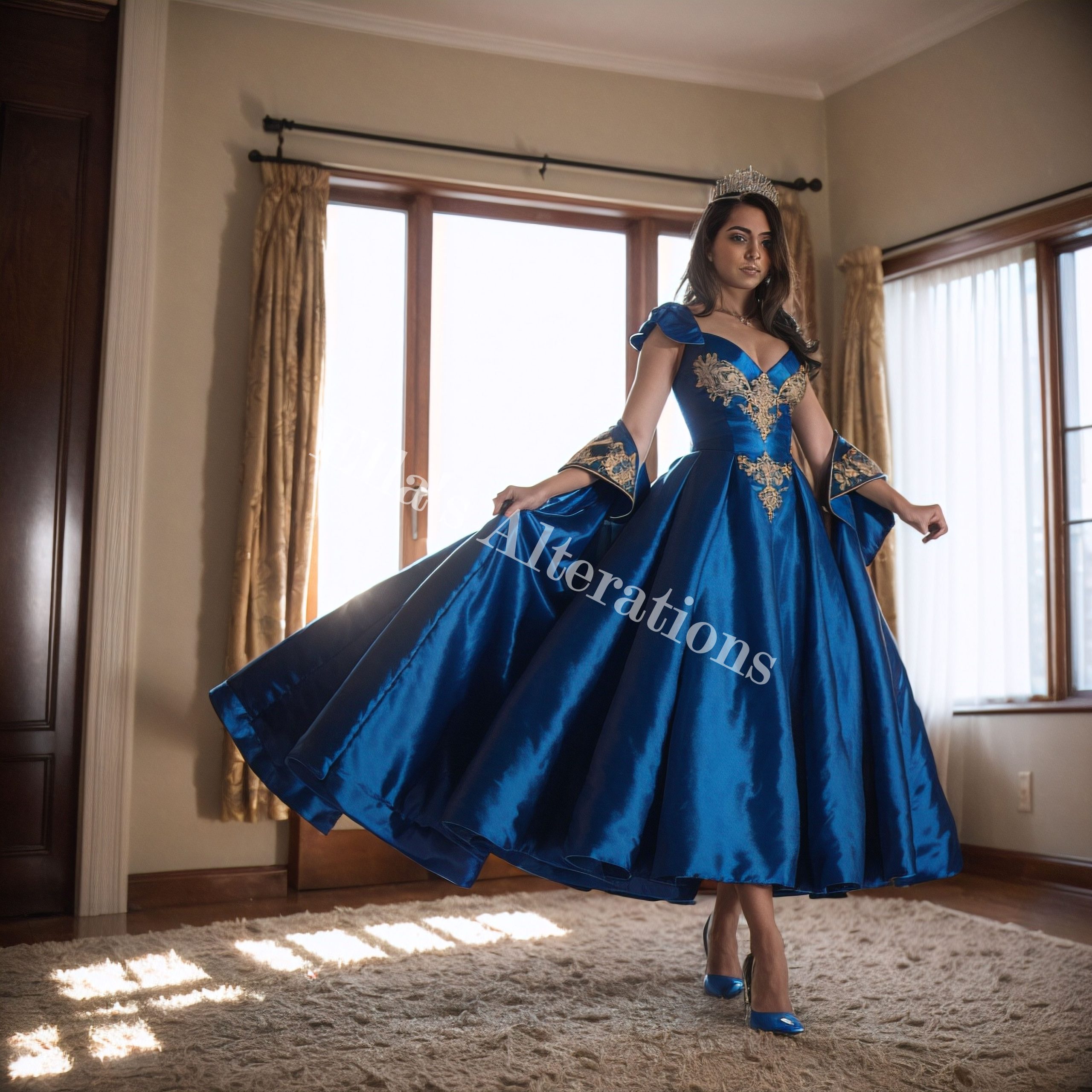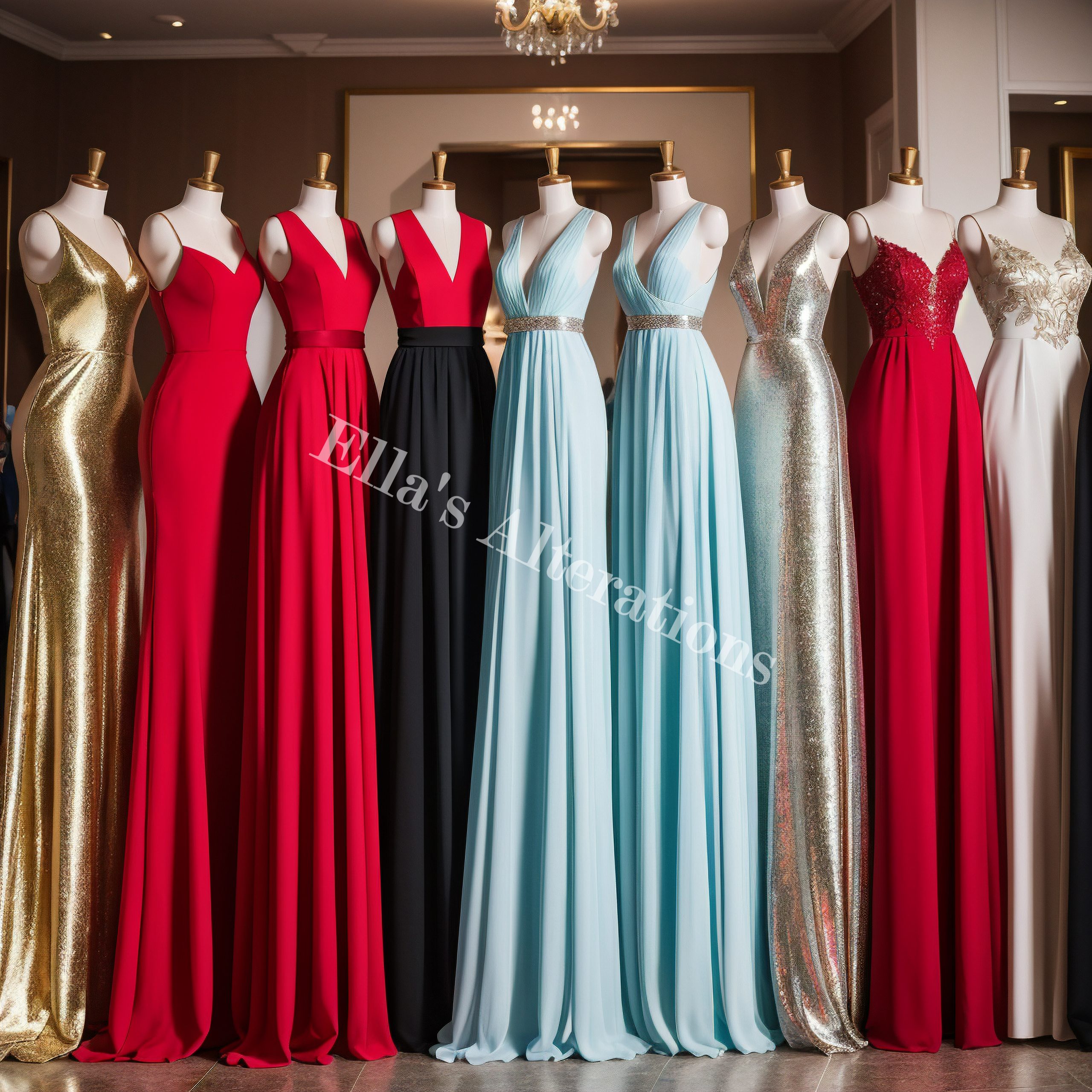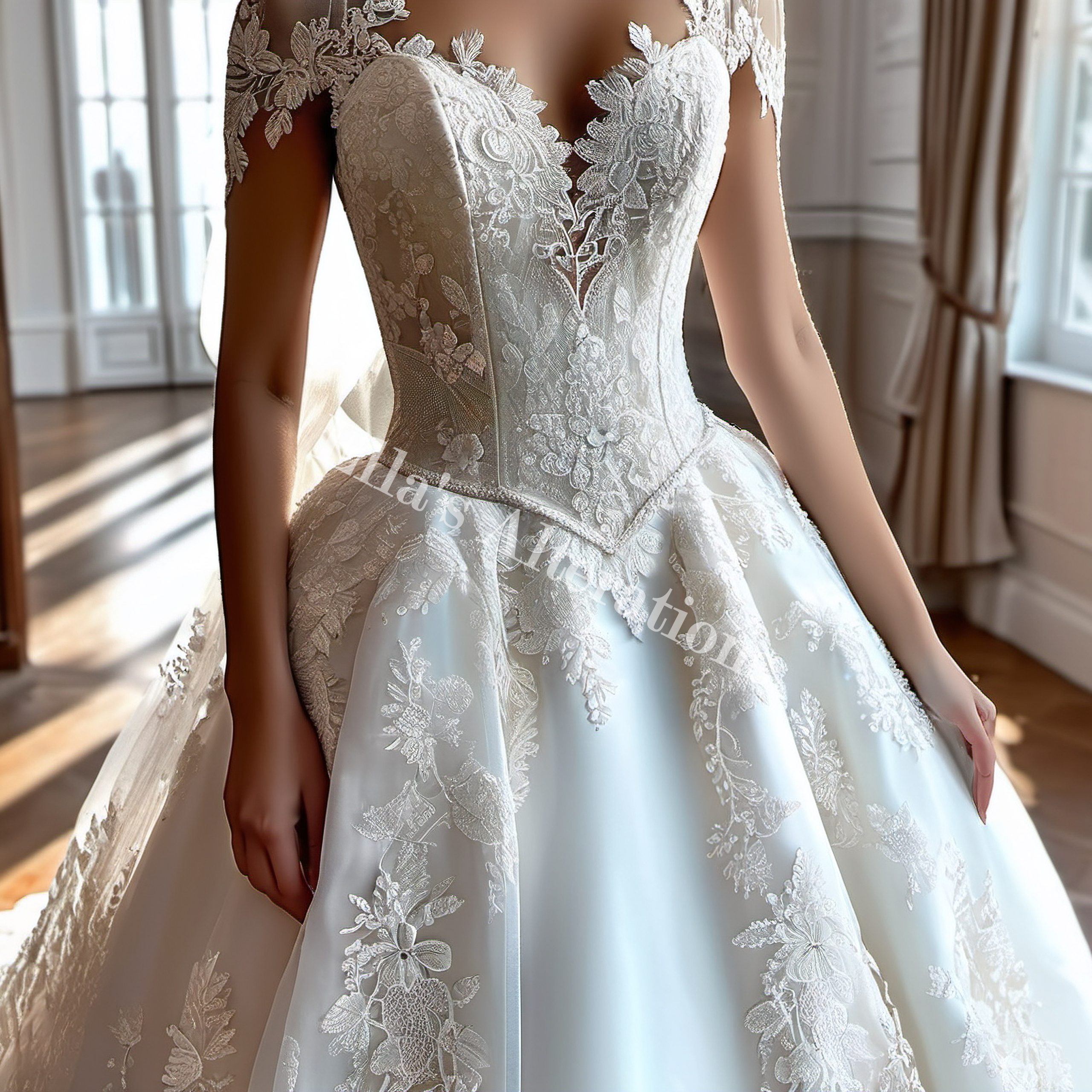Introduction:
When it comes to achieving a polished, well-fitted look, the choice between a tailor and a seamstress can make all the difference.
Although both professionals work with clothing and fabrics, their skills, training, and the scope of their services differ significantly.
Understanding these differences is essential for anyone looking to enhance their wardrobe with high-quality, custom-fitted garments.
This guide will walk you through everything you need to know about the roles of tailors and seamstresses, helping you make an informed decision that aligns with your unique needs, whether for a single garment or an entire wardrobe transformation.
Choosing the right professional requires understanding their respective areas of expertise.
A tailor is a highly trained specialist who focuses on garment construction, customization, and complex alterations.
Tailors are known for their ability to create custom fits, working meticulously to achieve the perfect drape, line, and silhouette for each individual.
Often, tailors undergo formal training in fashion design, garment construction, or fabric manipulation, equipping them with the technical know-how to create bespoke (custom-made) or made-to-measure clothing that fits each client’s body and style.
Their experience includes working with various fabrics, from delicate silks to sturdy leathers, making them ideal for projects that require precision, such as suits, jackets, and formal dresses.
Seamstresses typically focus on simpler alterations, adjustments, and repairs, often learning their skills through self-teaching or practical experience rather than formal training programs.
While many possess a good eye for detail and can skillfully handle everyday sewing tasks, their expertise usually lies in working with existing garments rather than creating made-to-measure pieces.
Their services are often a more budget-friendly option for common alterations like hemming pants, replacing zippers, or making minor adjustments to improve the fit and comfort of existing clothes.
For those seeking complex alterations or custom-made garments, a tailor’s expertise and formal training would be more suitable.
One of the most significant distinctions between tailors and seamstresses is the level of customization they can offer.
Tailors excel in bespoke and made-to-measure services, which means they create garments specifically designed to fit an individual’s unique measurements.
A bespoke suit, for instance, is crafted from scratch with the client’s body, posture, and preferences in mind, resulting in a garment that is not only tailored to fit but also designed to flatter.
Seamstresses, on the other hand, work within the constraints of pre-existing clothing, making alterations that improve fit but do not fundamentally change the garment’s structure or design.
The level of expertise and experience also sets tailors apart.
Many tailors possess years of specialized training and a deep understanding of garment construction.
They are well-versed in complex alterations, such as adjusting shoulder seams, tapering sleeves, or re-lining jackets, which require precise cuts, expert sewing techniques, and knowledge of how fabrics behave.
Seamstresses, while capable of many essential tasks, may not have the technical background to handle such intricate projects.
Their work is often more focused on practical adjustments, making them a convenient option for basic needs but not for those seeking custom, high-stakes tailoring.
Cost is another factor that differentiates the two roles.
It’s true that bespoke or made-to-measure garments, whether created by a tailor or a seamstress, will always be more expensive due to the significant time and skill involved.
However, when it comes to alterations, the pricing can be more nuanced.
While tailors may charge higher rates for complex alterations requiring specialized knowledge, such as intricate pattern adjustments or tailoring a suit jacket, seamstresses often offer comparable or even lower prices for more standard alterations.
This is because seamstresses generally focus on less labor-intensive tasks like hemming, mending, or simple garment adjustments.
Ultimately, the cost of alterations depends on factors like the complexity of the alteration, the experience of the seamstress or tailor, and the local market.
Choosing between the two should involve considering the garment’s importance to you, your budget, and the level of perfection you’re aiming for.
When deciding whom to hire, think carefully about your specific requirements.
For formal events, professional settings, or occasions that call for a flawless fit, a tailor is the superior choice.
A suit, wedding dress, or even a formal gown will benefit immensely from a tailor’s expertise, as they will ensure that every line and angle complements your body.
Conversely, if you’re looking to repair casual wear, adjust hems, or make simple modifications, a seamstress can offer the necessary skills to meet these needs effectively.
Finding the right professional means evaluating not only their expertise but also their approach to customer satisfaction.
A skilled tailor will consult with you about your preferences, offer fabric recommendations, and provide insight into how various alterations will impact the garment’s overall look and feel.
A good seamstress, likewise, should be able to communicate clearly about what is feasible for an existing piece, setting realistic expectations regarding the limits of alterations.
Ultimately, knowing the distinction between a tailor and a seamstress empowers you to make the best choice for each project.
With a comprehensive understanding of each role, you can ensure that your garments receive the right level of care and expertise, helping you achieve a wardrobe that fits beautifully, lasts longer, and feels uniquely yours.
Whether you’re investing in high-end pieces or keeping your everyday attire in top shape, the right professional can make all the difference.
This guide serves as your roadmap to achieving a well-curated, perfectly fitted wardrobe, helping you make each garment an extension of your personal style and confidence.
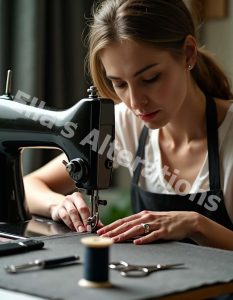
Understanding the Basics — Tailor vs. Seamstress:
In understanding the distinction between a tailor and a seamstress, it’s essential to recognize not only their respective roles but also their skill levels, scope of services, and areas of expertise.
Although both work within the fashion and garment industry, they serve different purposes and bring unique sets of skills to their clients.
This section delves into the fundamental qualities that define each profession, helping readers appreciate the level of expertise and specialization each offers.
A tailor is a highly skilled professional who specializes in altering, constructing, and fitting garments to meet specific needs.
Tailors are often sought for custom clothing, including bespoke (made-to-order) and made-to-measure garments, where they can create a piece from scratch or alter an existing one to fit perfectly.
The process of tailoring involves a deep understanding of human anatomy, fabric behavior, and garment structure.
Tailors are knowledgeable in the principles of pattern-making and design, which means they can adjust the lines, shapes, and proportions of clothing to flatter each client’s unique physique.
This expertise is critical for clients who desire a garment that is not only comfortable but also visually striking and crafted to enhance their appearance.
In terms of education and training, tailors generally undergo formal study and apprenticeships that allow them to master complex sewing techniques and learn the intricacies of garment construction.
This training may include classes in fashion design, pattern drafting, and fabric science, which contribute to a well-rounded understanding of the tailoring craft.
As a result, tailors possess a level of technical expertise that enables them to take on highly customized projects.
They work with diverse materials, from lightweight silks to heavy wool and leather, which allows them to cater to various styles and requirements, whether for casual or formal attire.
Tailors are especially known for their work on suits, coats, gowns, and other structured pieces, where precision in fit is critical.
On the other hand, a simple unskilled seamstress typically focuses on practical sewing skills, making adjustments to existing garments rather than constructing new pieces from scratch.
Seamstresses handle more straightforward, utilitarian tasks, such as hemming pants, shortening sleeves, repairing seams, and replacing zippers.
While they may be skilled at sewing and have a solid understanding of garment repair, their work is usually less specialized than that of a tailor.
Most seamstresses acquire their skills through hands-on experience, sometimes with minimal formal training, and may be self-taught or have learned through practical apprenticeships rather than formalized education.
In terms of scope and complexity, seamstresses tend to perform tasks that are relatively straightforward, with a focus on small repairs and basic alterations.
For instance, if you need jeans hemmed or a button replaced, a seamstress would be an ideal choice.
Their services are generally quicker and more budget-friendly, making them a suitable option for individuals seeking minor changes without the need for extensive alteration.
However, if a garment requires significant restructuring—such as adjusting the shoulders on a jacket or tapering the waist of a suit or altering a wedding dress a tailor would be better suited for the job due to their advanced understanding of garment construction and fit.
One of the main differences in the level of customization offered by each professional lies in the fact that tailors often create or adjust garments based on the unique measurements and proportions of the client.
They work meticulously to fit garments according to the client’s posture, body shape, and aesthetic preferences, resulting in a look that is refined and tailored to the individual.
Seamstresses, in contrast, generally work with standard patterns or pre-made garments, making adjustments that enhance comfort or usability but do not provide the same level of personalized fit.
In this way, tailors can create garments that feel uniquely tailored, while seamstresses help refine and improve off-the-rack pieces.
Another distinction lies in the types of projects each professional is best suited for.
Tailors are often called upon for special, high-stakes occasions where fit and quality are paramount, such as weddings, formal events, or professional attire.
Because of their expertise, tailors can handle complex projects, from custom-made suits and wedding gowns to high-end alterations for vintage clothing.
Seamstresses, however, are ideal for day-to-day clothing repairs and simpler adjustments that improve the wearability of garments without drastic changes.
For example, a seamstress might be the go-to choice for shortening jeans, mending a ripped seam, or replacing a broken zipper.
In choosing between a tailor and a seamstress, consider the garment’s importance, the extent of alterations needed, and your budget.
A tailor’s services sometimes cost a little more, reflecting the high level of expertise, time, and care dedicated to each piece.
A seamstress, meanwhile, provides more accessible options for those seeking quick fixes or minor modifications.
Ultimately, understanding these basics enables you to select the right professional for each project, ensuring that every garment—whether custom-made or off-the-rack—looks and feels its best.
By distinguishing between the roles of tailors and seamstresses, you can make informed choices that suit both your wardrobe and your personal style.
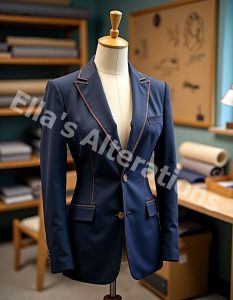
Fit for a King: Why Tailors, Not Seamstresses, Are Essential for Suits!
Key Differences and Similarities:
When considering whether to hire a tailor or a seamstress, understanding their key differences and similarities is essential for making the right choice.
Both professionals play valuable roles in garment care and customization, but their skills, services, and levels of expertise vary greatly.
This section highlights the most significant aspects that set them apart, along with a few similarities that sometimes cause confusion between the two roles.
One of the primary differences between tailors and seamstresses lies in the range and depth of services they offer.
Tailors typically provide highly specialized services that require advanced knowledge of garment construction and complex alteration techniques.
Their work often involves creating custom fits, altering intricate pieces, or even constructing garments from scratch.
Tailors are especially known for crafting tailored suits, jackets, coats, and other structured pieces, where precise fit and style are crucial.
This high level of expertise allows them to take on custom projects or complex alterations that demand a comprehensive understanding of fabric behavior, garment lines, and proportions.
Seamstresses, in contrast, usually focus on more straightforward simple tasks.
Their work centers around basic alterations and repairs, such as hemming pants, adjusting seams, mending tears, or replacing zippers.
While seamstresses are sometimes skilled at sewing and handling various fabrics, their role is generally less intensive than that of a tailor due to a lack of formal training and garment design understanding.
They do not typically engage in creating entirely new garments or making intricate alterations that fundamentally change the fit and structure of a piece.
Instead, their services are best suited for everyday repairs and minor adjustments that improve the functionality or comfort of existing clothing.
Training and expertise also differentiate tailors from seamstresses.
Many tailors have formal training in fashion design, textile science, or garment construction, and they often complete apprenticeships to refine their skills under experienced professionals.
This formal education equips them with technical knowledge and specialized skills that allow them to work with high-end fabrics and execute precise alterations.
Seamstresses, on the other hand, are often self-taught or trained in practical, hands-on sewing techniques usually not formal training.
While they may develop proficiency over time through experience, seamstresses typically do not undergo the extensive training that tailors do.
As a result, tailors are generally able to provide a higher level of craftsmanship and customization.
Another key difference is the level of customization each can provide.
Tailors excel in creating bespoke (fully custom) and made-to-measure garments that are specifically designed to fit an individual’s unique measurements.
A tailor can adjust the garment’s proportions, add design elements, and ensure that each piece complements the client’s body type, style, and preferences.
Seamstresses, on the other hand, are more limited in their ability to customize garments fully.
They work within the constraints of existing clothing, making minor adjustments that improve the garment’s fit or usability without transforming its original structure or style.
Despite these differences, there are a few similarities between the two professions that sometimes blur the lines.
Both tailors and seamstresses are skilled with sewing machines and have a keen eye for detail, ensuring that their work meets a high standard of quality.
They both work with fabrics, tools, and sewing techniques, and both may perform basic alterations like hemming or taking in the waist on a dress.
However, while seamstresses may focus more on these everyday adjustments, tailors use their sewing and fabric-handling skills for more advanced projects that go beyond simple repairs.
Pricing and time requirements are also factors that set these roles apart.
Because tailoring often involves extensive customization and a higher level of skill, it tends to be more time-intensive and costly.
Tailors invest a significant amount of time and effort in ensuring that each garment fits perfectly, which is reflected in their pricing.
Bespoke suits, for example, require multiple fittings and a considerable amount of handwork, making them a luxury investment.
Seamstresses, by comparison, usually offer more affordable rates, as their services are generally quicker and less labor-intensive, keeping in mind that you are not paying for their training just their simple services.
This makes them an excellent choice for clients looking for budget-friendly solutions to minor alterations or repairs.
Additionally, the types of fabrics and garment styles each professional handles can differ.
Tailors are often trained to work with a wide range of fabrics, including delicate silks, sturdy wools, and leather, allowing them to handle everything from evening gowns to structured outerwear.
Seamstresses, however, may primarily work with everyday fabrics like cotton, denim, and polyester, focusing on casual wear or simpler pieces.
While some experienced seamstresses can work with more delicate materials, they are generally not as well-versed in handling high-end or specialty fabrics as tailors are.
Ultimately, choosing between a tailor and a seamstress depends on the project’s complexity and the client’s expectations.
For those seeking a high-quality, custom fit for formal or high-stakes attire, a tailor is the ideal choice due to their extensive expertise and skill.
However, for individuals looking to make small adjustments, repairs, or improvements to everyday garments, a seamstress provides a practical and cost-effective solution.
While both tailors and seamstresses bring valuable skills to the table, their roles cater to different needs.
Recognizing these key differences and similarities helps clients make informed decisions, ensuring they receive the right level of care and craftsmanship for each piece in their wardrobe.
Whether for a custom-made suit or a simple hem adjustment, understanding these nuances ensures that each garment meets the client’s standards for quality, fit, and style.

When to Choose a Tailor:
When considering whether to hire a tailor or a seamstress, understanding their key differences and similarities is essential for making the right choice.
Both professionals play valuable roles in garment care and customization, but their skills, services, and levels of expertise vary greatly.
This section highlights the most significant aspects that set them apart, along with a few similarities that sometimes cause confusion between the two roles.
One of the primary differences between tailors and seamstresses lies in the range and depth of services they offer.
Tailors typically provide highly specialized services that require advanced knowledge of garment construction and complex alteration techniques along with most any type of alterations.
Their work often involves creating custom fits, altering intricate pieces, or even constructing garments from scratch.
Tailors are especially known for crafting tailored suits, jackets, coats, and other structured pieces, where precise fit and style are crucial.
This high level of expertise allows them to take on custom projects or complex alterations that demand a comprehensive understanding of fabric behavior, garment lines, and proportions.
Seamstresses, in contrast, usually focus on more straightforward tasks.
Their work centers around basic alterations and repairs, such as hemming pants, adjusting seams, mending tears, or replacing zippers.
While seamstresses are skilled at sewing and handling various fabrics, their role is generally less intensive than that of a tailor.
They do not typically engage in creating entirely new garments or making intricate alterations that fundamentally change the fit and structure of a piece.
Instead, their services are best suited for everyday repairs and minor adjustments that improve the functionality or comfort of existing clothing.
Training and expertise also differentiate tailors from seamstresses.
Many tailors have formal training in fashion design, textile science, or garment construction, and they often complete apprenticeships to refine their skills under experienced professionals.
This formal education equips them with technical knowledge and specialized skills that allow them to work with high-end fabrics and execute precise alterations.
Seamstresses, on the other hand, are often self-taught or trained in practical, hands-on sewing techniques.
While they may develop proficiency over time through experience, seamstresses typically do not undergo the extensive training that tailors do.
Tailors undergo extensive training and possess a deep understanding of garment construction, enabling them to handle intricate alterations and create custom-made pieces.
This expertise allows them to provide a higher level of craftsmanship and customization, especially for complex garments like suits, tuxedos, wedding dresses, and other formal wear.
For example, a tailor can expertly adjust the fit of a suit jacket, ensuring the shoulders sit correctly, the lapels lie smoothly, and the overall silhouette complements the wearer’s body shape.
They can also make precise alterations to a wedding dress, taking into account the delicate fabrics and intricate details often involved.
Similarly, a tailor can expertly hem a tuxedo, ensuring the proper break and drape of the fabric for a polished look.
These types of alterations require in-depth knowledge of garment construction and tailoring techniques, which are typically gained through formal training and years of experience.
While a seamstress might be able to handle simpler alterations on these garments, a tailor’s expertise is often necessary for achieving the precise fit and impeccable finish that these special occasion garments demand.
Another key difference is the level of customization each can provide.
Tailors excel in creating bespoke (fully custom) and made-to-measure garments that are specifically designed to fit an individual’s unique measurements.
A tailor can adjust the garment’s proportions, add design elements, and ensure that each piece complements the client’s body type, style, and preferences.
Seamstresses, on the other hand, are more limited in their ability to customize garments fully.
They work within the constraints of existing clothing, making minor adjustments that improve the garment’s fit or usability without transforming its original structure or style.
Despite these differences, there are a few similarities between the two professions that sometimes blur the lines.
Both tailors and seamstresses are skilled with sewing machines and have a keen eye for detail, ensuring that their work meets a high standard of quality.
They both work with fabrics, tools, and sewing techniques, and both may perform basic alterations like hemming or taking in the waist on a dress.
However, while seamstresses may focus more on these everyday adjustments, tailors use their sewing and fabric-handling skills for more advanced projects that go beyond simple repairs.
Pricing and time requirements are also factors that set these roles apart.
Because tailoring often involves extensive customization and a higher level of skill, it tends to be more time-intensive and costly for custom work, however every day type alterations are about the same in cost.
Tailors invest a significant amount of time and effort in ensuring that each garment fits perfectly, which is reflected in their pricing.
Bespoke suits, for example, require multiple fittings and a considerable amount of handwork, making them a luxury investment.
Seamstresses, by comparison, usually offer more affordable rates, as their services are generally quicker and less labor-intensive due to a lack of education and experience.
This makes them an excellent choice for clients looking for budget-friendly solutions to minor alterations or repairs.
Additionally, the types of fabrics and garment styles each professional handles can differ.
Tailors are often trained to work with a wide range of fabrics, including delicate silks, sturdy wools, and leather, allowing them to handle everything from evening gowns to structured outerwear.
Seamstresses, however, may primarily work with everyday fabrics like cotton, denim, and polyester, focusing on casual wear or simpler pieces.
While some experienced seamstresses can work with more delicate materials, they are generally not as well-versed in handling high-end or specialty fabrics as tailors are.
Ultimately, choosing between a tailor and a seamstress depends on the project’s complexity and the client’s expectations.
For those seeking a high-quality, custom fit for formal or high-stakes attire, a tailor is the ideal choice due to their extensive expertise and skill.
However, for individuals looking to make small adjustments, repairs, or improvements to everyday garments, a seamstress provides a practical and cost-effective solution.
While both tailors and seamstresses bring valuable skills to the table, their roles cater to different needs.
Recognizing these key differences and similarities helps clients make informed decisions, ensuring they receive the right level of care and craftsmanship for each piece in their wardrobe.
Whether for a custom-made suit or a simple hem adjustment, understanding these nuances ensures that each garment meets the client’s standards for quality, fit, and style.

Dress Train Lengths Demystified: From Sweep to Cathedral, What’s Your Pick?
When a Seamstress is the Right Choice:
When it comes to choosing between a tailor and a seamstress, there are many scenarios where a seamstress is the ideal choice.
While a tailor is best for complex alterations and custom projects, a seamstress is well-equipped to handle simpler, everyday tasks that keep garments in great condition and improve their comfort or functionality.
Knowing when to hire a seamstress can save time, money, and ensure that your clothes receive the care they need without over-investing in services better suited for intricate tailoring.
A seamstress is most commonly needed for basic alterations and minor repairs.
For example, if a hem needs adjusting on pants, skirts, or dresses, a seamstress can accomplish this task quickly and affordably.
These small adjustments can make a big difference in how a garment fits or feels without altering its structure.
Additionally, if you find that a garment is slightly too loose or tight, a seamstress can make straightforward alterations to the waist, sleeves, or seams to improve the fit without significant changes.
These minor adjustments are part of a seamstress’s core expertise and are ideal for off-the-rack clothing that simply needs a few tweaks to look and feel better.
Everyday garment repairs are another area where seamstresses shine.
Whether it’s replacing a broken zipper, mending a tear, or reattaching buttons, a seamstress can handle these repairs efficiently.
Seamstresses are well-versed in practical sewing techniques, making them an excellent choice for anyone who needs to repair or refresh their wardrobe without the need for specialized tailoring skills.
Since these repairs do not require extensive fabric manipulation or pattern adjustment, seamstresses can deliver reliable, cost-effective solutions to extend the life of your garments.
For example, when a beloved pair of jeans develops a small tear, or a coat’s zipper breaks, a seamstress can often repair these issues with minimal time and expense.
Another reason to hire a seamstress is for budget-friendly alterations.
While tailors often charge a premium for their specialized services, seamstresses provide a more affordable option for clients looking to improve the fit or function of everyday clothing.
For items like jeans, casual dresses, shirts, and skirts, a seamstress can make alterations at a fraction of the cost of a tailor.
This is especially useful for clients who may need regular alterations but want to stay within a budget.
If you have a closet full of clothing that could use a little adjustment, a seamstress offers a practical way to keep your wardrobe looking polished without significant investment.
A seamstress is also ideal for quick, convenient alterations that do not require extensive fittings or multiple adjustments.
Many basic alterations, such as shortening a hem or taking in a waist, can be completed in a short time frame and often with a single fitting.
This makes seamstresses a go-to option for clients who need simple adjustments without the back-and-forth that custom tailoring projects often require.
Busy clients or those with fast-approaching deadlines, such as last-minute event outfits, may find that a seamstress provides the speed and accessibility they need for simpler tasks.
Seamstresses can be found in many local sewing shops, dry cleaners, and department stores, making it easy to drop off garments for alteration and pick them up later.
This accessibility allows clients to have alterations done on a regular basis without the need to visit specialized tailoring shops.
For those who may not require the specialized skills of a tailor, finding a seamstress nearby can offer a convenient way to maintain their wardrobe and ensure that clothes always look presentable and fit well.
For seasonal or temporary adjustments, a seamstress is often the ideal choice.
For example, if you need to shorten a pair of pants temporarily or add extra fabric to a piece to fit during a specific period, such as maternity or weight fluctuation, a seamstress can provide these temporary adjustments without the cost of custom tailoring.
This can be especially helpful for clients who anticipate needing only a temporary fit change and want an affordable option for clothing alterations.
Lastly, casual and non-specialty clothing benefits most from a seamstress’s services.
Items that don’t require a custom fit—such as T-shirts, jeans, casual skirts, and other everyday wear—can be adjusted quickly by a seamstress, improving their fit and comfort without the need for extensive work.
These clothes typically don’t need the same level of attention that formal wear or tailored suits do, making a seamstress a logical, budget-conscious choice.
While a seamstress might be a good option for basic alterations on everyday clothes, entrusting your formal wear to one can be risky.
Garments like wedding dresses, suits, and tuxedos often require specialized knowledge and precise adjustments to achieve the perfect fit and drape.
These pieces often involve delicate fabrics, intricate construction, and complex tailoring techniques that may be beyond the expertise of a typical seamstress.
A poorly executed alteration could ruin the garment’s structure, fit, and overall appearance, potentially leading to disappointment and added costs to rectify the issue.
For such high-stakes garments, seeking the expertise of a trained tailor is a safer bet to ensure your formal wear looks its absolute best.
A seamstress is a perfect choice for minor alterations, everyday repairs, and budget-friendly garment adjustments.
Seamstresses bring skill and efficiency to the tasks of repairing and modifying existing garments without the cost and complexity associated with tailoring.
Whether you need a simple hem, a button replaced, or a zipper repaired, a seamstress can help keep your clothing in excellent condition, making it easy and affordable to maintain a wardrobe that looks good, fits well, and lasts longer.

Finding the Right Professional for Your Needs:
Choosing the right professional—whether a tailor or a seamstress—depends largely on the specific requirements of your project, the level of expertise needed, and the type of garment in question.
Finding the ideal professional ensures you receive high-quality work, a precise fit, and lasting satisfaction with your clothing.
This section provides an in-depth guide to locating and evaluating tailoring and alteration experts to meet your unique needs, from formal wear adjustments to everyday clothing repairs.
First, assess the scope and complexity of your project.
If you’re working with a garment that requires detailed adjustments, such as a tailored suit, wedding dress, or any bespoke piece, a tailor’s expertise is essential.
Tailors are trained in pattern-making, garment construction, and advanced alterations, allowing them to handle complex projects that demand precision and structural adjustments.
Conversely, if your needs are simpler, such as hemming a dress, replacing a zipper, or adjusting seams, a seamstress will likely be more than capable of delivering high-quality results.
Understanding the level of work required is the first step in determining which professional is best suited for the job.
Researching professionals in your area is crucial for finding someone reputable and skilled.
Start by checking local reviews on sites like Google, Yelp, or specialized platforms like Thumbtack or TaskRabbit, where clients share detailed feedback on their experiences.
Positive reviews that highlight attention to detail, timeliness, and good communication are strong indicators of a reliable professional.
Additionally, you may find reviews that specify the types of services each professional is known for, helping you match their expertise to your needs.
If you’re seeking custom or intricate alterations, look for tailors or seamstresses with specific experience in the type of clothing or fabric you’re working with, such as formal wear, leather, or vintage clothing.
Visit or consult with potential professionals before committing to any project.
Many tailors and seamstresses offer consultations, which provide an opportunity to discuss your specific needs, assess the professional’s skill level, and get a feel for their approach to customer service.
During this initial meeting, pay attention to how the professional handles questions about the garment, alteration options, and estimated costs.
A skilled tailor or seamstress will be able to clearly explain what can be achieved, offer recommendations, and provide realistic expectations regarding the outcome and timeline.
Observing the workspace during this visit can also give you insight into their level of professionalism—an organized, well-equipped workspace often signals a careful and experienced professional.
Ask for a portfolio or examples of past work if possible.
Many tailors and seamstresses keep photos of their previous projects or even display them in their shops.
Reviewing a portfolio gives you a concrete idea of the quality and range of their work, especially if you’re considering custom tailoring or intricate adjustments.
Tailors may showcase examples of fitted suits, gowns, or complex alterations that highlight their skill in creating clean lines and achieving the perfect fit.
Seamstresses might display examples of casual wear repairs, hem adjustments, and other practical alterations that reveal their attention to detail and ability to handle everyday adjustments.
Consider the price range and timeline for your project.
Pricing can vary widely between tailors and seamstresses, so it’s wise to get an estimate upfront.
Tailors often charge more for custom work, bespoke garments, or complicated alterations, reflecting the skill and time involved.
A simple seamstress, on the other hand, typically offer more affordable rates for standard alterations or repairs.
Be sure to clarify the pricing structure, as some professionals charge per hour while others may have set prices for certain types of alterations.
Additionally, ask about the estimated timeline, especially if you need the garment for a specific event.
Custom tailoring often requires multiple fittings and a longer time frame, while simpler alterations from a seamstress can usually be completed more quickly.
Communication and clarity are essential throughout the process.
The right professional will listen to your needs, provide recommendations, and keep you informed about the progress.
If you’re considering custom work, discuss your vision in detail, bringing reference photos or sketches if possible.
A skilled tailor will ask questions to fully understand your expectations and offer advice on how best to achieve your desired look.
For simpler alterations, a good seamstress will be straightforward about what’s possible, ensuring you’re on the same page regarding the outcome.
Finally, evaluate the professional’s follow-up and commitment to quality.
A tailor or seamstress who cares about their craft will often welcome feedback and make minor adjustments if needed.
After the initial fitting or repair, check the garment carefully to ensure it meets your expectations.
Some professionals offer free follow-up adjustments, while others may charge a small fee, so it’s important to clarify this upfront.
A good professional will take pride in their work and ensure that each client leaves satisfied with the final result.
By following these steps, you can find the right professional who understands your specific needs and can deliver the level of quality you expect.
Whether you’re seeking a refined, custom-tailored suit or a simple repair on a favorite dress, choosing the right expert will not only extend the life of your garments but also enhance your confidence in wearing pieces that fit and flatter perfectly.
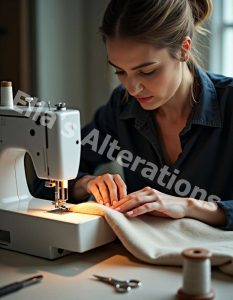
Conclusion:
In the journey of understanding the nuances between a tailor and a seamstress, we uncover the essential roles each plays in transforming and maintaining our wardrobes.
Choosing the right professional can make a significant difference in how our clothes look, fit, and last over time.
Whether you need a minor repair or a fully custom garment, knowing the skills and strengths that each expert offers ensures that your clothes receive the proper care and attention, ultimately enhancing your appearance, comfort, and confidence.
A tailor, as we’ve explored, is invaluable for complex alterations, custom designs, and made-to-measure garments.
Their years of training and mastery of garment construction allow them to work with precision and expertise, creating pieces that are unique to each individual’s measurements and style.
Tailors are often the go-to choice for high-quality, bespoke projects like suits, gowns, coats, and other structured garments that demand a perfect fit.
They understand the intricacies of garment design, fabric behavior, and proportion, making them skilled in adjusting lines, shapes, and details to flatter each body.
For anyone looking to invest in timeless wardrobe pieces, whether it be a formal suit or an evening dress, a tailor’s craftsmanship and dedication to quality provide lasting value.
On the other hand, seamstresses offer reliable, accessible services for more practical, everyday needs.
Their work may be less complex than that of a tailor, but it is no less important.
Seamstresses excel in handling basic alterations, repairs, and adjustments that keep our clothes looking fresh and functional.
From hemming pants and mending seams to replacing zippers and adjusting simple fits, a seamstress is ideal for routine clothing maintenance.
Their skills allow them to make quick, affordable adjustments that enhance the wearability and longevity of garments, making them a valuable resource for anyone who wants to extend the life of their everyday clothing.
For those seeking minor modifications without investing in a tailor’s expertise, a seamstress offers the convenience and practicality that keeps wardrobes functional.
The decision between a tailor and a seamstress ultimately depends on the garment’s importance, the level of customization needed, and your budget.
If you are working with high-quality fabrics, unique or vintage pieces, or special-occasion attire, investing in a tailor is often worthwhile.
The tailor’s advanced skills and ability to create or refine garments down to the smallest detail ensure that each piece looks exceptional and fits perfectly.
For simpler adjustments, repairs, or casual wear, a seamstress provides a more economical solution that still delivers quality results without the time and cost of custom tailoring.
Taking the time to find the right professional also pays off.
Researching and consulting with prospective tailors or seamstresses helps ensure that they are well-equipped to meet your needs and expectations.
From reviewing portfolios to understanding their pricing structure, selecting a professional who aligns with your goals contributes to a positive experience and satisfactory results.
A reputable professional, whether a tailor or seamstress, will communicate openly, set realistic expectations, and demonstrate a commitment to their craft.
Building a relationship with the right expert means you’ll have a trusted partner to turn to for all your future clothing needs.
Investing in quality alterations and repairs benefits more than just your wardrobe; it contributes to a more sustainable approach to fashion.
Instead of discarding garments that no longer fit or need repair, working with a skilled professional allows you to breathe new life into existing pieces, reducing waste and promoting a longer lifespan for each item.
This approach not only saves money over time but also aligns with environmentally conscious practices, making it a win for both your closet and the planet.
Ultimately, understanding the distinct strengths of tailors and seamstresses empowers you to make informed choices about your wardrobe, ensuring that each garment fits well, feels comfortable, and reflects your style.
Whether it’s a custom suit that requires a tailor’s expertise or a favorite pair of jeans needing a quick repair, knowing who to turn to keeps your clothing in top condition.
By choosing the right professional for each project, you can curate a wardrobe that is well-maintained, versatile, and tailored to your needs.
In conclusion, whether you need minor adjustments or intricate alterations, selecting the appropriate professional will help you maximize the potential of each piece.
This guide offers the foundation for understanding these essential roles, giving you the tools to confidently enhance and preserve your clothing.
A well-fitted, carefully maintained wardrobe isn’t just about style—it’s about investing in quality, valuing craftsmanship, and ensuring that every piece serves you well, season after season.

Stitch it Right: Understanding the Difference Between a Tailor and Seamstress.
FAQs:
What should I bring to my first tailoring or seamstress appointment?
When preparing for your first tailoring or seamstress appointment, bringing the right items can ensure the process goes smoothly and helps you get the best possible results.
Here’s a checklist to make the most of your visit:
The Garment in Question: This might seem obvious, but make sure to bring the specific clothing item you want tailored or altered.
If the piece is part of a set, such as a suit jacket with matching pants, bring both items.
This allows the tailor or seamstress to see the full outfit and assess how each piece affects the overall look.
Proper Undergarments and Shoes: To achieve a precise fit, bring any undergarments, shapewear, or layers you plan to wear with the garment.
For example, if you’re altering a dress or a pair of trousers, wearing the right bra or undergarments will impact the fit, ensuring adjustments are made accordingly.
Additionally, bring the shoes you intend to wear, especially if you’re having a hemline adjusted.
The heel height can significantly affect where the hem should fall for the ideal length.
Inspiration Photos or Style References: If you have a specific style, fit, or alteration in mind, bring along photos or examples to help convey your vision.
Whether it’s a specific taper for a pant leg or the length of a jacket sleeve, these visual references will help the tailor or seamstress understand exactly what you want.
This can be especially useful if you’re working with a new professional and want to be sure your preferences are clear.
Questions or Notes About Adjustments: Take some time before your appointment to consider what you’d like to adjust and how you envision the final fit.
Write down any specific questions or concerns so you remember to address them during the appointment.
For instance, if you’re unsure about the best fit for a certain garment or need advice on alterations, these notes can guide the conversation and help the tailor provide expert suggestions.
Budget and Timeline Expectations: If you have a budget or timeline in mind, be prepared to discuss it.
This is particularly important for larger projects or custom tailoring.
Knowing your budget allows the tailor or seamstress to suggest options within your price range, while discussing timelines helps set realistic expectations, especially if you need the garment for an upcoming event.
Bringing these items and preparing in advance will ensure your appointment is productive, helping the tailor or seamstress understand your needs and preferences.
By taking these steps, you’re more likely to leave with a garment that fits perfectly and reflects your personal style.
Are tailoring services more expensive than seamstress services?
Not necessarily.
While tailoring is sometimes seen as more costly, the price difference between a tailor and a seamstress largely depends on the specific service needed.
Tailors are indeed more expensive for custom bespoke alterations and original garment designs, such as made-to-measure suits or unique, high-stakes pieces that require extensive fittings and personalized adjustments.
These projects involve detailed measurements, fabric selection, and construction tailored to an individual’s precise body shape, which justifies the higher cost due to the time, expertise, and craftsmanship required.
However, for more standard alterations—like hemming, taking in waistlines, or adjusting sleeves—a tailor’s prices are typically comparable to those of a seamstress.
For these everyday adjustments, tailors offer competitive rates similar to those of a seamstress, particularly when the alterations are straightforward.
While a tailor’s training is often more specialized, allowing them to handle complex projects, they are equally capable of performing simpler, routine fixes without significantly higher costs.
Seamstresses are an excellent choice for minor, practical repairs and alterations such as fixing a seam, shortening a hem, or replacing buttons or zippers.
Since seamstresses generally focus on these basic adjustments, their rates are economical and reflect the less complex nature of their work.
Tailors can perform these tasks at similar price points, especially if they work in local tailoring shops where they handle a range of alteration types.
Unless you’re seeking custom-made garments or intricate bespoke alterations, you’re unlikely to see a substantial cost difference between a tailor and a seamstress for routine services.
Tailors and seamstresses alike provide affordable solutions for standard alterations, making them both accessible options depending on your specific needs.
Can a seamstress make a custom suit?
Typically, a seamstress is not equipped to make a custom suit, as custom suit-making requires specialized skills, advanced garment construction knowledge, and often formal training that seamstresses generally do not possess.
A seamstress usually focuses on basic alterations and repairs, such as hemming, taking in or letting out seams, and replacing zippers.
Many seamstresses are self-taught, learning through practical, hands-on experience rather than formal education in garment construction or fashion design.
While they may be very skilled in handling straightforward adjustments and everyday garment repairs, creating a custom suit demands a deeper level of expertise in tailoring.
A custom suit requires precise measurements, complex pattern-making, and detailed knowledge of fabric behavior, all of which are essential for crafting a garment that fits the client’s body flawlessly.
Tailors undergo rigorous training in these areas, allowing them to construct pieces from scratch based on a client’s unique proportions, posture, and style preferences.
The process of making a custom suit includes multiple fittings, exacting cuts, and adjustments to achieve a refined fit that enhances the client’s physique and personal style.
Tailors are also trained to work with various types of fabric and garment structures, such as lapels, cuffs, and vents, which are integral elements of a custom suit’s design.
Seamstresses, on the other hand, may not have the technical background needed to create complex garments like suits, especially those requiring an impeccable, structured fit.
Their expertise is generally more suited to tasks that improve the wearability of pre-existing clothing rather than constructing entirely new pieces.
While an experienced seamstress could potentially assist with basic alterations on a suit, such as shortening sleeves or adjusting the waist, they typically do not have the training to design or construct a custom suit from scratch.
In summary, while a seamstress is invaluable for basic alterations and everyday repairs, creating a custom suit is a task best left to a professional tailor.
Tailors possess the advanced skills and formal training needed to craft a high-quality, well-fitted custom suit, whereas a seamstress is better suited for minor adjustments that enhance the comfort and usability of ready-made clothing.
How do I find a good tailor for formal attire?
Finding a skilled tailor for formal attire can make a huge difference in the fit, style, and overall presentation of your clothing.
Here are some steps to help you identify a qualified tailor who can bring out the best in your formal garments, whether it’s a suit, gown, or evening wear.
Start with Recommendations and Reviews: Begin by asking friends, family, or colleagues if they have a tailor they trust, especially if you admire how their formal clothing fits.
Personal referrals are invaluable because they come from firsthand experience.
Additionally, check online reviews on platforms like Google, Yelp, or fashion-specific sites.
Look for tailors with consistent positive feedback, particularly from clients who have had formal wear tailored or created.
Pay attention to comments about attention to detail, quality, and professionalism.
Look for Tailors with Formal Wear Expertise: Not all tailors specialize in formal attire, so it’s essential to find someone experienced in working with suits, gowns, and other structured garments.
Visit the tailor’s website or shop and inquire about their experience with formal wear.
Many tailors have portfolios showcasing their work, which can give you insight into their skill level with specific fabrics, styles, and complex garment structures.
Visit the Shop and Have a Consultation: Once you’ve shortlisted a few options, schedule a visit.
Observing the workspace can be telling—a clean, organized shop with professional equipment often signals a serious, skilled tailor.
During the consultation, discuss your needs, the style you’re looking for, and any specific details about the garment.
A good tailor will listen carefully, offer suggestions, and be transparent about what’s achievable.
Ask About the Process and Fitting Stages: Formal wear alterations, especially for suits and gowns, often require multiple fittings to achieve the ideal fit.
Ask the tailor how many fittings they recommend and what the process will involve.
A tailor who prioritizes precision will usually conduct at least two or three fittings to ensure the garment’s fit and appearance are perfect.
Evaluate Communication and Transparency: Good tailors are clear about pricing, timelines, and expectations.
During your initial consultation, they should provide an estimate, explain the cost breakdown, and set realistic expectations for the final outcome.
If you feel rushed or if the tailor doesn’t answer your questions clearly, consider it a red flag.
By following these steps, you’ll have a better chance of finding a professional tailor who can create or alter formal attire with the skill, care, and attention to detail required to look polished and sophisticated.
Investing time in selecting the right tailor will ensure your formal garments look impeccable and feel comfortable, enhancing your confidence and presence at any event.
What should I bring to my first tailoring or seamstress appointment?
When preparing for your first tailoring or seamstress appointment, bringing the right items can ensure the process goes smoothly and helps you get the best possible results.
Here’s a checklist to make the most of your visit:
The Garment in Question: This might seem obvious, but make sure to bring the specific clothing item you want tailored or altered.
If the piece is part of a set, such as a suit jacket with matching pants, bring both items.
This allows the tailor or seamstress to see the full outfit and assess how each piece affects the overall look.
Proper Undergarments and Shoes: To achieve a precise fit, bring any undergarments, shapewear, or layers you plan to wear with the garment.
For example, if you’re altering a dress or a pair of trousers, wearing the right bra or undergarments will impact the fit, ensuring adjustments are made accordingly.
Additionally, bring the shoes you intend to wear, especially if you’re having a hemline adjusted.
The heel height can significantly affect where the hem should fall for the ideal length.
Inspiration Photos or Style References: If you have a specific style, fit, or alteration in mind, bring along photos or examples to help convey your vision.
Whether it’s a specific taper for a pant leg or the length of a jacket sleeve, these visual references will help the tailor or seamstress understand exactly what you want.
This can be especially useful if you’re working with a new professional and want to be sure your preferences are clear.
Questions or Notes About Adjustments: Take some time before your appointment to consider what you’d like to adjust and how you envision the final fit.
Write down any specific questions or concerns so you remember to address them during the appointment.
For instance, if you’re unsure about the best fit for a certain garment or need advice on alterations, these notes can guide the conversation and help the tailor provide expert suggestions.
Budget and Timeline Expectations: If you have a budget or timeline in mind, be prepared to discuss it.
This is particularly important for larger projects or custom tailoring.
Knowing your budget allows the tailor or seamstress to suggest options within your price range, while discussing timelines helps set realistic expectations, especially if you need the garment for an upcoming event.
Bringing these items and preparing in advance will ensure your appointment is productive, helping the tailor or seamstress understand your needs and preferences.
By taking these steps, you’re more likely to leave with a garment that fits perfectly and reflects your personal style.
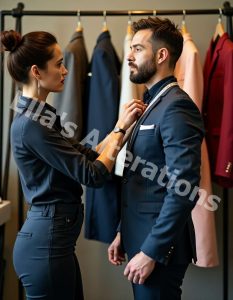
About Us
|
Locations: 28.23362,
-82.181195, 25 Miles |
[trustindex-feed-facebook]
